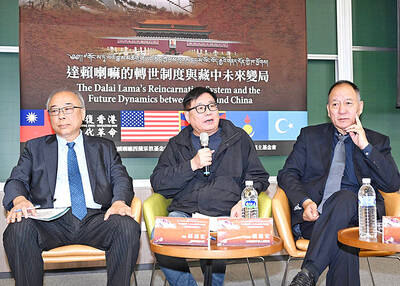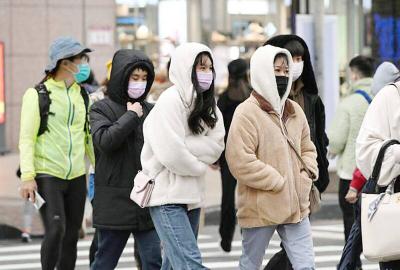People and groups from tourism-related sectors in Taiwan and the Philippines are calling on the government to extend its visa-free entry program for Filipinos, which ends on July 31.
Representative to the Philippines Michael Hsu (徐佩勇) told Taiwanese business leaders at a meeting a few days ago in the Philippines that his office has been inundated with e-mails from Filipinos urging Taiwan to extend the program.
EVA Air, China Airlines and Philippine Airlines are among industry players hoping for the program to be extended, Hsu said.
The Philippine Travel Agencies Association and the Philippine Tour Operators Association also reportedly called on the Taiwan Representative Office to convey the widespread support for the program.
A 14-day visa-free entry program for Filipinos was implemented in November 2017 in line with the government’s New Southbound Policy and was extended for one year after the trial period ended on July 31 last year.
Earlier this month, Philippine Dental Association president Arleen Reyes thanked Taiwan for the privilege of visa-free entry during a courtesy call to the Taipei Economic and Cultural Office in Manila.
The convenience of visa-free entry has encouraged many Filipinos to visit Taiwan, Reyes said, adding that the policy should be continued.
During the first two months of this year, 72,803 Philippine tourists visited Taiwan, a 31.37 percent increase from the same period last year, Tourism Bureau data showed.
Most Filipinos visiting Taiwan are young and not that well-off, so they usually plan their trips three to four months in advance to save on air fares, said a Taiwanese airline officer in Manila who requested anonymity.
He predicted a decline in ticket sales in coming months if the program’s future remains uncertain. Potential visitors might turn to other Southeast Asian countries or even Australia instead of Taiwan, he said.
Jay Lee (李韋憲), a Taiwanese who teaches Chinese in Manila, said that many of his students had visited Taiwan over the past two years, adding: “The visa-free treatment really made a difference.”

ALIGNED THINKING: Taiwan and Japan have a mutual interest in trade, culture and engineering, and can work together for stability, Cho Jung-tai said Taiwan and Japan are two like-minded countries willing to work together to form a “safety barrier” in the Indo-Pacific region, Premier Cho Jung-tai (卓榮泰) yesterday said at the opening ceremony of the 35th Taiwan-Japan Modern Engineering and Technology Symposium in Taipei. Taiwan and Japan are close geographically and closer emotionally, he added. Citing the overflowing of a barrier lake in the Mataian River (馬太鞍溪) in September, Cho said the submersible water level sensors given by Japan during the disaster helped Taiwan monitor the lake’s water levels more accurately. Japan also provided a lot of vaccines early in the outbreak of the COVID-19 pandemic,

Kaohsiung Mayor Chen Chi-mai (陳其邁) on Monday announced light shows and themed traffic lights to welcome fans of South Korean pop group Twice to the port city. The group is to play Kaohsiung on Saturday as part of its “This Is For” world tour. It would be the group’s first performance in Taiwan since its debut 10 years ago. The all-female group consists of five South Koreans, three Japanese and Tainan’s Chou Tzu-yu (周子瑜), the first Taiwan-born and raised member of a South Korean girl group. To promote the group’s arrival, the city has been holding a series of events, including a pop-up

TEMPORAL/SPIRITUAL: Beijing’s claim that the next Buddhist leader must come from China is a heavy-handed political maneuver that will fall flat-faced, experts said China’s requirement that the Dalai Lama’s reincarnation to be born in China and approved by Beijing has drawn criticism, with experts at a forum in Taipei yesterday saying that if Beijing were to put forth its own Dalai Lama, the person would not be recognized by the Tibetan Buddhist community. The experts made a remarks at the two-day forum hosted by the Tibet Religious Foundation of His Holiness the Dalai Lama titled: “The Snow Land Forum: Finding Common Ground on Tibet.” China says it has the right to determine the Dalai Lama’s reincarnation, as it claims sovereignty over Tibet since ancient times,

Temperatures in some parts of Taiwan are expected to fall sharply to lows of 15°C later this week as seasonal northeasterly winds strengthen, the Central Weather Administration (CWA) said today. It is to be the strongest cold wave to affect northern Taiwan this autumn, while Chiayi County in the southwest and some parts of central Taiwan are likely to also see lower temperatures due to radiational cooling, which occurs under conditions of clear skies, light winds and dry weather, the CWA said. Across Taiwan, temperatures are to fall gradually this week, dropping to 15°C to 16°C in the early hours of Wednesday